What Is PIM: The Complete Guide
Definition of PIM
The simple answer to “what is PIM” is: PIM stands for product information management that helps eCommerce businesses centrally store and manage product data. Product information scattered across spreadsheets, CRMs, ERPs, and local folders is organized into one single source of truth to eliminate errors, improve efficiency, take products to market faster, and ultimately boost revenue.
There’s often a lot of confusion between master data management and product information management. Master data management refers to managing an organization’s critical data like customer data, employee data, product data, and more. It acts as a single point of reference for all the data in an organization. A PIM is a subset of master data management; it helps specifically manage product data.
Importance of accurate product information
The impact of accurate and consistent product information on customer experience and business operations can’t be overstated.
Without a PIM system, the data remains trapped in disparate systems leading to inaccurate information. Here are some reasons why your product data needs to be accurate:
- Builds customer trust
- Enhances buying decisions
- Reduces returns and dissatisfaction
- Boosts brand reputation
- Improves SEO and discoverability
- Increases sales and revenue
.png)
Product Information Management (PIM) systems work by centralizing and streamlining the management of product information within an organization. Here is a general overview of how a PIM system works:
-
Product data sync:
PIM acts as a centralized repository for all product-related information, consolidating data from various sources such as suppliers, manufacturers, and internal systems.
-
Data import and integration:
PIM imports data from various sources including spreadsheets, databases, and it integrates with external marketplaces and channels for data distribution
-
Data standardization and normalization:
PIM standardizes and normalizes product data to ensure consistency across all attributes, formats, and units of measurement enabling high data quality and accuracy
-
Enrichment and attribute management:
Users can enrich product data by adding additional information, filling missing information, and enriching catalogs with media assets
-
Workflow and collaboration:
PIM systems often include workflow management tools, allowing teams to collaborate on approval of product information.
-
Data governance in PIM:
Data governance in PIM includes lifecycle management processes, stringent access controls, and continuous monitoring of data quality. It ensures compliance with regulatory requirements - by establishing data governance you can ensure customer trust and satisfaction.
When do you need a PIM system?
A product information management tool is an immediate need for your company when you experience one or all of the following.
- When product SKUs are growing
- You collect data from multiple suppliers
- When you expand your sales channels
- You want to achieve an omnichannel experience
- Difficulty in managing multiple teams
- A lot of time and energy goes into manual tasks
- Dealing with frequent updates
- Handling complex product data
- Struggling with data inconsistencies
Here’s a quick summary
| Aspect | Your business with PIM | Your business without PIM |
|---|---|---|
| Product Data | Centralized, organized, accurate | Scattered, inconsistent, prone to errors |
| Efficiency | Streamlined workflows, faster updates | Manual processes, delays in updates |
| Channel Consistency | Consistent data across channels | Inaccuracies and discrepancies |
| Marketing | Enhanced campaigns, rich data for targeting | Limited data, inconsistent messaging |
| Customer Experience | Accurate information, improved trust | Unclear details, potential dissatisfaction |
| Time-to-Market | Faster launch of products | Delays due to data preparation |
| Team Collaboration | Cross-functional collaboration | Disjointed efforts |
| Scalability | Easily manage growing product range | Struggles with expansion |
Get a step-by-step analysis of how to evaluate the need for a PIM
Key Components of PIM
-
Centralized data:
A PIM system helps in organizing data from various sources - ERPs, CRMs, CMS, spreadsheets, and local folders to a single source of truth. This helps eCommerce businesses manage product data efficiently, maintain data accuracy and consistency, syndicate content seamlessly, and increase overall revenue.
 (1).png)
-
Instant syndication:
The major challenge that eCommerce businesses face today is publishing content on different sales channels and adhering to the unique channel requirements. Without a platform like PIM in place, businesses spend endless hours on standardizing and creating channel-specific content.
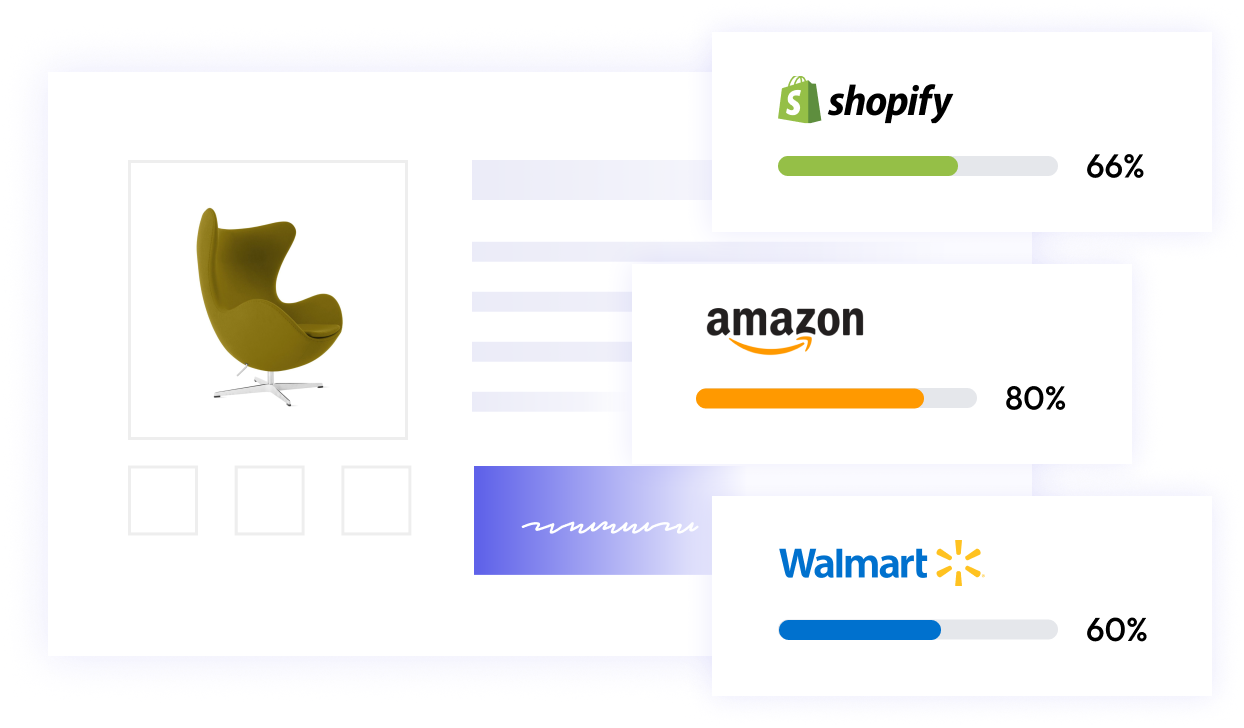
A lot of human effort goes into this that impacts productivity and results in delayed time to market. But, with PIM’s instant syndication and native integrations, products can be instantly published on channels meeting the exact requirements.
-
Team collaboration:
Creating a final product catalog goes through multiple iterations and contributions from multiple stakeholders. But, the pain here is, without a PIM, the internal and external stakeholders end up writing long email threads to follow up and communicate. Some stakeholders collaborate on spreadsheets leading to costly errors.
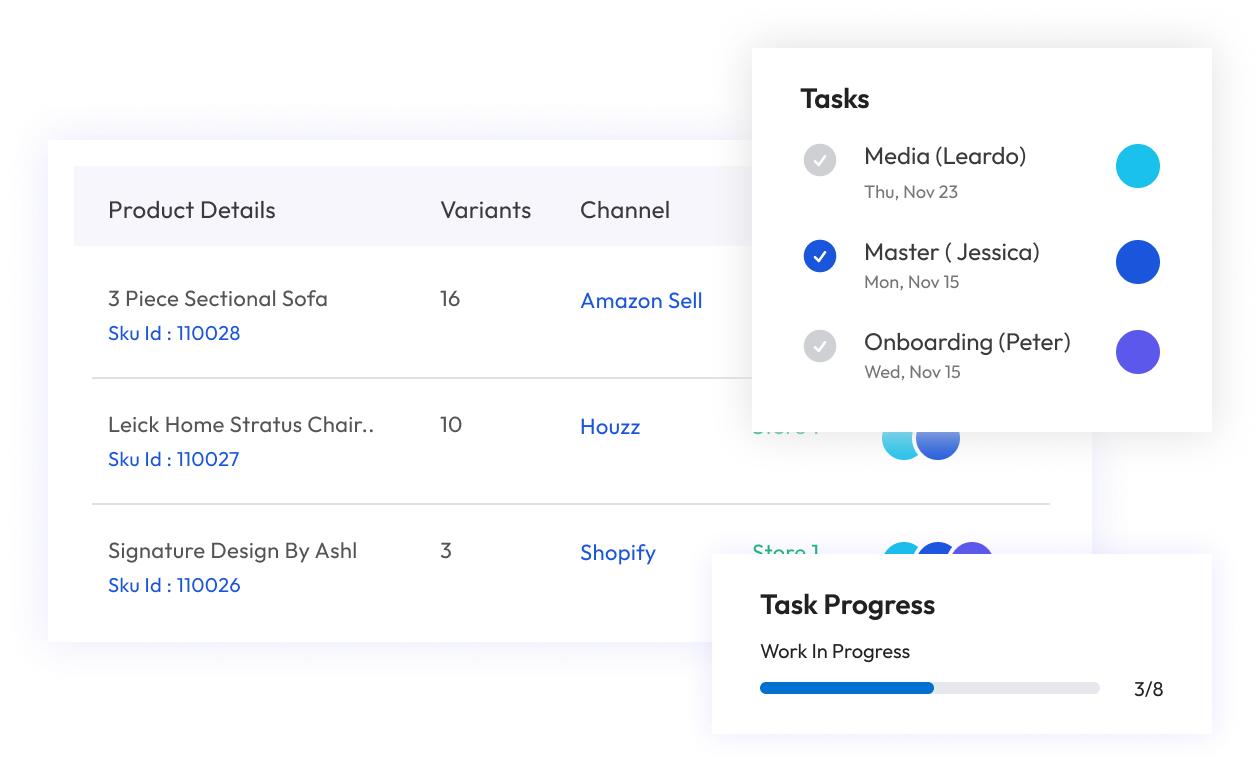
A PIM can turn this around by enabling real-time collaboration. The teams can tag, comment, assign and collaborate with one another. They can create workflows and ensure productivity.
-
Vendor data management:
Vendors often find it difficult to collaboratively work on product data and make it market-ready. You can also assign roles and controls where one vendor cannot view other vendors’ data.
A PIM helps in reducing the complexities of unorganized vendor data and streamline, standardize, and structure high volumes of data with pre-built rules and templates.
-
SEO:
Search Engine Optimization (SEO) for product catalogs is an essential to maximize online search visibility and drive targeted organic traffic. By optimizing product descriptions, titles, images, and metadata with relevant keywords, you enhance the chances of your products appearing in search engine results.
A very few PIM platforms understand the significance of optimized product catalogs and provide options to optimize content with the help of performance metrics and content integrity tracking.
-
Channel personalization:
A PIM helps in personalizing product data based on the unique requirements of each channel with its in-built templates. Let’s say for example, you sell on 2 channels (Matrix and Nexus). Your apparel (red shirt) needs to be called out as “Red” on Matrix and “Maroon” on Nexus - PIM helps in standardizing this based on channel requirements.
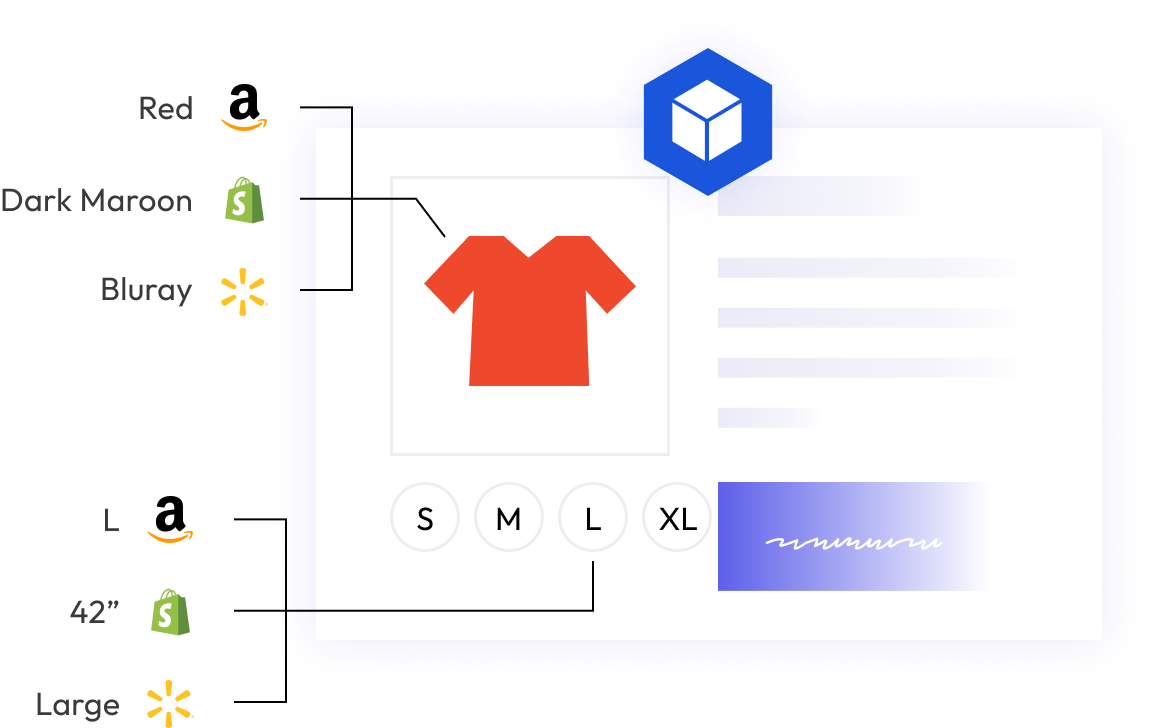
Not just that, the content can also be localized based on the language of a particular region.
-
Data Enrichment:
Enriching product catalogs with rich and comprehensive information helps in improving customer experience and enables your customers to make informed decisions.
With a PIM, product data can be enriched - missing data can be automatically updated by scraping relevant information from the web.
.png)
-
Analytics and reports:
Analytics and reports are integral components of a Product Information Management (PIM) system, providing valuable insights into the performance and effectiveness of your product data management strategies.
With robust analytics, you can track data quality, user engagement, and the impact of your product information across various channels.
Benefits of Implementing PIM
-
Enhanced Data Accuracy:
With a PIM, all your product information lives under one roof which means your data is managed efficiently reducing the errors, inconsistencies, and inefficiencies. This ensures that your final catalogs are error-free, crisp, and engaging.
-
Reduce time to market:
You can save hours of manual work involved in standardizing product data to make it comply with unique channel requirements. You can take your products to market faster by automatically syndicating data with in-built templates.
-
Multi-channel consistency:
A generic one size fits all product catalog does not make the cut if you are selling on multiple channels. A PIM helps in maintaining brand consistency and channel adherence by standardizing product data.
-
Ease of collaboration:
Communicate with you marketing colleagues and catalog managers within your organization or with suppliers and manufacturers who’re external collaborators at ease with a PIM.
Who needs a PIM?
-
Suppliers and vendors
Suppliers and vendors utilize a PIM to store, send, and manage product information. They collaborate with the companies to share any updates or changes. They also assign approval workflows on a PIM to ensure data consistency and accuracy.
-
IT teams:
IT teams help in evaluating a PIM system for its security, efficiency, and other aspects and implementing it across the organization.
-
E-commerce managers:
E-commerce managers play a crucial role in product content creation. They are under constant pressure to create, update, and modify product information. A PIM system helps in managing and refreshing the content.
-
Marketing teams:
Marketing teams create and finalize the customer-facing product catalogs. They coordinate with multiple stakeholders to finalize the catalogs. The content should also be optimized for search engines. The centralized management in the PIM system facilitates optimizing product content and syndicating accurate data to the websites.
Expand to global markets with product data that is presented in multiple languages to build loyalty and attract new buyers.
-
Retailers & Brands:
Retailers and brands need an efficient and advanced PIM system to manage huge volumes of product information. The information is acquired from different sources - suppliers, retailers, brand owners, agencies and internal teams. This data is poor in quality because it comes in large volumes, different standards and inconsistent in formats.
A PIM system helps retailers organize, normalize and enrich product content that is consistent with every channel.
What kind of data is managed in a PIM?

-
Basic product information
Product title, descriptions, SKUs, and features
-
Digital assets
Images, documents, music, videos, and other multimedia content
-
Technical details
Measurements, variants, specifications, and ingredients
-
Sales data
Customer reviews, pricing information, and testimonials
-
Marketing data
Keywords, meta information, and promotional content
Why is PIM not the same as DAM?
| Aspect | Product Information Management (PIM) | Digital Asset Management (DAM) |
|---|---|---|
| Focus | Manages and enriches product information | Organizes and distributes digital assets |
| Data Type | Product-related information | Media assets (images, videos, documents) |
| Primary Use Case | Centralizing and optimizing product data | Organizing and sharing digital content |
| Information Included | Product specifications, attributes, pricing | Product specifications, attributes, pricing |
| Target Audience | Internal teams (product, marketing, sales) | Internal and external stakeholders |
| Goal | Consistent, accurate product information | Efficient asset storage and retrieval |
| Channel Management | Ensures consistency across sales channels | Enables controlled asset distribution |
| Integration | Often integrates with e-commerce platforms | Integrates with creative and marketing |
| Examples | Product descriptions, specs, categories | Brand logos, marketing materials, videos |
| Use in Marketing | Provides data for marketing campaigns | Empowers marketing with media resources |
| Data Structure | Attributes, hierarchies, relationships | Metadata, tags, categorization |
| Workflow Management | Supports collaborative data enrichment | Facilitates approval and editing cycles |
| Measuring Success | Improved data accuracy, faster launches | Streamlined creative asset workflows |
Often PIM (product information management) and DAM (digital asset management) are used interchangeably. While there are some similarities, PIM and DAM are different concepts. While PIM is product information management, DAM is handling of digital assets like videos, images, documents etc.
The Ultimate Guide To Digital Asset Management (DAM).
How to choose the best PIM solution?
There are a ton of PIM software in the market. But, business needs are different. Depending on your unique needs, you have to choose a PIM. You must also be watchful of what utility you gain from investing in a PIM. A good product information management system will help you:
- A PIM tool should help you manage product experience and not just data. Creating contextual customer experience can be achieved when a PIM helps you define overall data quality
- A good PIM platform should enable ease of onboarding data, workflows, and integrations. An important aspect of successful change management is the usability and intuitiveness of the system
- Product data management becomes holistic and becomes a unified infrastructure only when you are able to manage information even after syndication
- A PIM solution gives product information performance and in-depth insights to help you understand the perception of product information by the customer and allows you in an informed overall strategic planning
- Product information management system should extend a 360-degree view of products by incorporating additional data assets such as transactional, interactional, observational, and analytics data to enable greater business insight
What are the best PIM tools to get started with?
There are bunch of good PIM tools in the market that you can get started with. Here are the top five that you can explore:
-
PIMworks:
It is a product information management tool that helps small and medium-sized e-commerce businesses manage their product data centrally and get their products to the market faster with instant syndication and native integrations.
With PIMworks, you can:
- Centrally store and manage your product data.
- Integrate with leading marketplaces and channels like Amazon, Walmart,Shopify, WooCommerce, BigCommerce, and Magento.
- Enrich product catalogs automatically.
- Collaborate with external and internal stakeholders with automated workflows.
- Syndicate products instantly with in-built channel templates
- Personalize product content and translate them to suit any language or region.

-
Plytix:
Plytix is a user-friendly Product Information Management (PIM) platform that caters to small businesses and helps them establish a single source for their product data.
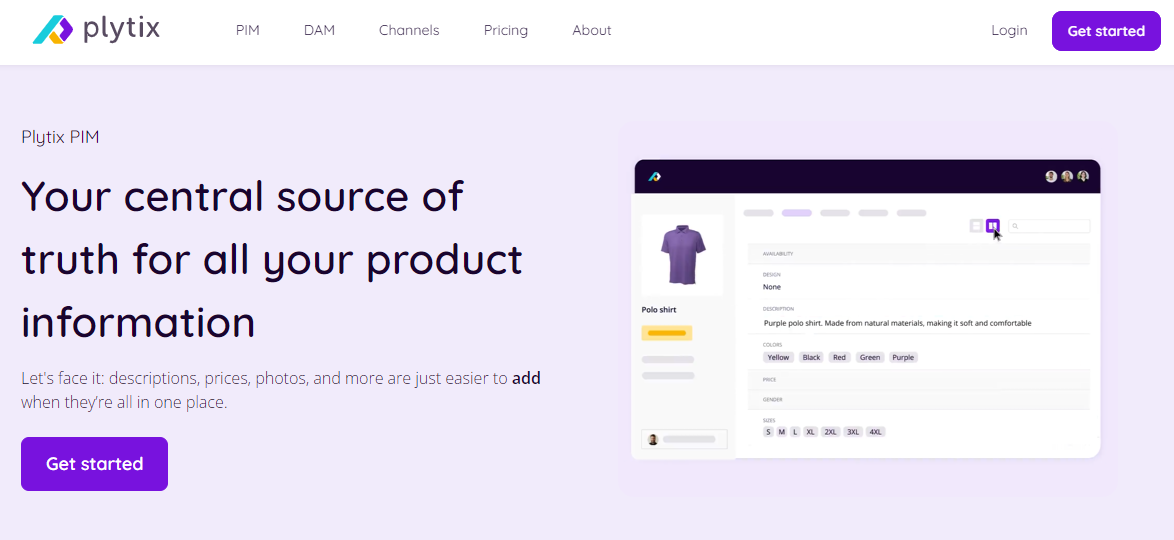
-
Akeneo:
Akeneo is a leading Product Information Management (PIM) solution, that helps businesses efficiently manage product data and create omnichannel experiences.

-
Salsify:
Salsify is a robust Product Experience Management (PXM) platform, offering end-to-end solutions for product content management, digital asset management, and syndication.
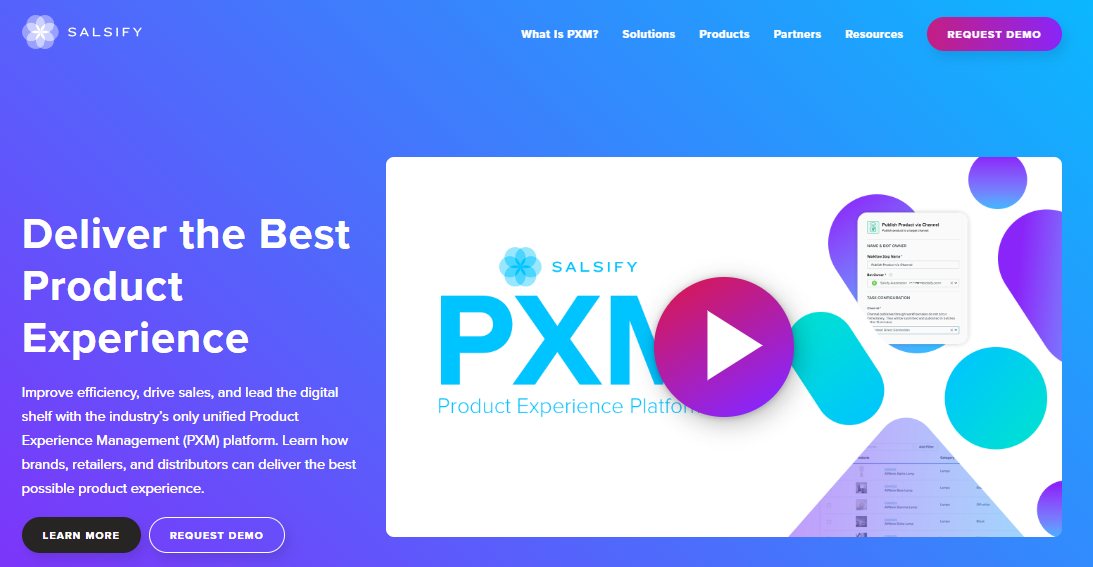
-
Pimcore:
Pimcore is an integrated digital experience platform that includes Product Information Management (PIM) capabilities. It provides a centralized solution for managing product data, digital assets, and other content.
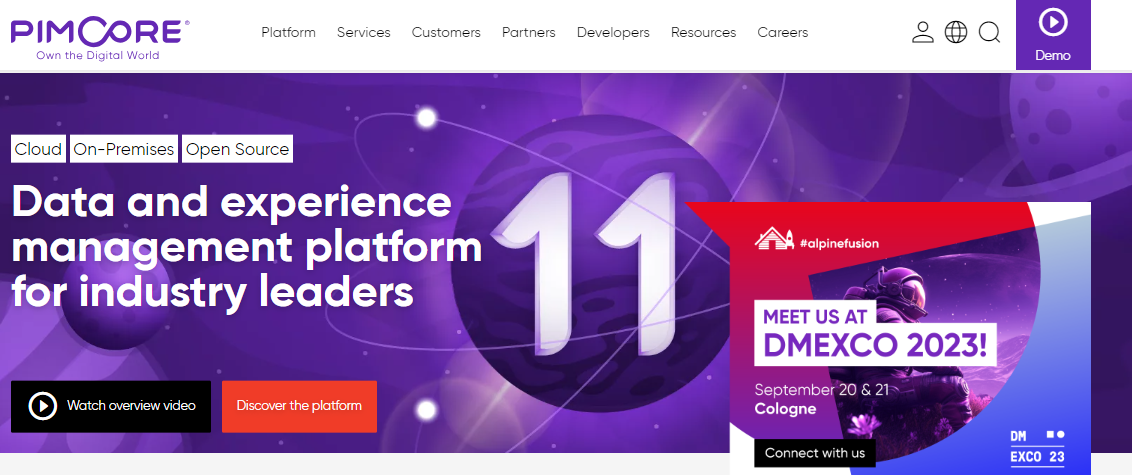
What are the different industries that a PIM caters to?
-
Apparel:
Manage detailed categories, attributes, and minute product information for the apparel industry.
-
Consumer goods:
Manage diverse product portfolios, optimize marketing content, and ensure accurate and consistent information for consumer goods such as apparel, electronics, and household items.
-
Automotive:
Handle extensive product data related to vehicle parts, accessories, and specifications, improving collaboration across the supply chain.
-
Healthcare:
Manage product information for pharmaceuticals, medical devices, and healthcare equipment, ensuring compliance with regulatory standards.
-
Food and Beverage:
Handle detailed product information including ingredients, nutritional facts, and compliance data for food and beverage products.
-
Electronics:
Manage technical specifications, compatibility information, and marketing content for electronic and technological products.
-
Home and Furniture:
Centralize and optimize product information for furniture, home decor, and appliances, ensuring accurate details for customers.
PIM Implementation Process
-
Needs Assessment:
The first step in implementing a PIM Software for your organization is understanding the need and finding out how a PIM can transform your business and change the way things are done
-
Vendor Selection:
Next step is to evaluate the players in the market and identify the best PIM platform that serves your business needs. PIMworks is a leader in the industry that helps eCommerce businesses solve all their product data challenges. You can talk to a PIM expert before making a decision
-
Data Migration:
After finalizing your PIM provider, you should think about the process of data migration. Involve your IT team at this stage
-
Integration with Other Systems:
Integrate PIM with other business systems like ERP, CRM, and other platforms that your business currently uses
PIM Integrations
A PIM system integrates with internal systems like ERP, CRM etc. and external systems like marketplaces and channels. Here’s an overview:
 (1).png)
1.Amazon and PIMworks integration
If you are selling on Amazon, integrating with PIM helps you publish products on Amazon with a click of a button. You can stay compliant with the constantly changing rules and guidelines of Amazon easily
2.Magento and PIMworks integration
If you are selling on Magento, integrating with PIM helps you import inventory in a single-click and link multiple Magento stores to your PIM account.
3.Shopify and PIMworks integration
If you are selling on Shopify, integrating with PIM helps you publish products on your Shopify store with a click of a button or in batches. You can manage multiple product data, SKUs, and variants in your Shopify store from a central location.
4.Walmart and PIMworks integration
If you are selling on Walmart, integrating with PIM helps you manage and edit your product data in bulk and expand your business globally with automated data syndication.
Future Trends in PIM
Artificial Intelligence (AI) and Machine Learning (ML) are major players in the future of PIM by automating data categorization, enrichment, and personalized recommendations.
Integration with emerging technologies like Augmented Reality (AR) and Virtual Reality (VR) will provide immersive product experiences. PIM will further embrace omnichannel capabilities, ensuring seamless data distribution across various touchpoints.
As businesses adapt to these trends, PIM will continue to play a pivotal role in driving efficient data management and elevating customer engagement.
Conclusion
PIM goes beyond simple data management; it empowers organizations to centralize, enrich, and distribute product information efficiently across various channels. By adopting a PIM solution, businesses can ensure consistent and accurate product data, streamline workflows, enhance customer experiences, and accelerate time-to-market.
The ability to harness the power of PIM Software not only leads to operational efficiency but also positions companies to excel in a competitive market, deliver compelling marketing campaigns, and build lasting customer trust.
